Updated: 30 Aug 2015)
Fez, an ancient Berber city

Fes is the oldest of Morocco's imperial cities. it is the embodiment of the country's
history and its spiritual and religious capital. The city was founded by Madinat Fas
in 808 on the right bank of the river. His son, Idriss II built another town on the left
bank. In 818 these two cities received hundreds of Muslim families who had been
expelled from Cordoba. The two towns soon became the center of the
Arabization and Islamization of Morocco.

Dar el-Makhzen, the royal palice in Fez, was the main residence of the sultan, his guard and
retinue of servants. It was built in the 18th centruy and is closed to the public. The palace
is still used by the king of Morocco when he comes to town. King Mohammed VI cemented his
relationship with the ancient city when he married the daughter of school teachers whom he met
while attending college. She is now Morocco's queen. Marrying a "commoner" from Fes was very popular.
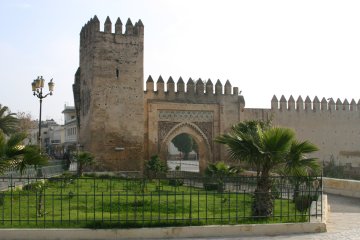
We enter Fez through through the
southern gate at Place des Alaouites.

The gates to the royal palace consists of seven
doors. The center gate is for the King. The two smaller gates are for members of his
government. The next two are for ambassadors and the two smallest doors are for members
of his harem. We are told that Mohammed VI is taking steps to open many of the
old Royal Palaces to the public.

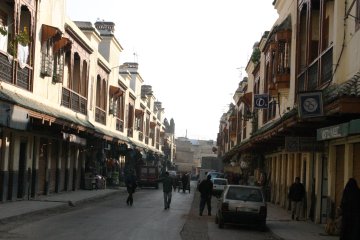
Rue Boukhessissat is a main street and was once the aristocratic area.
The houses face the street with workshops on the ground
floor. The Jewish quarter is on the right side.
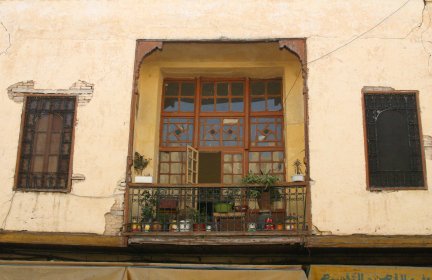
A typical wooden balcony characteristic of
the Jewish architecture of Fes.
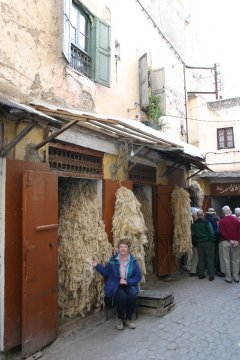
Fran sits outside a wool market in the
Jewish quarter. You can buy the wool either in its pure state,
or combed, or finished ready for spinning.

We visited the 17th century Danan Synagogue. After
climbing the steep narrow staircase we step into the terrace for a
view of the Jewish cemetary below. It is an ancient custom that
cemetaries must always be located outside the city walls.
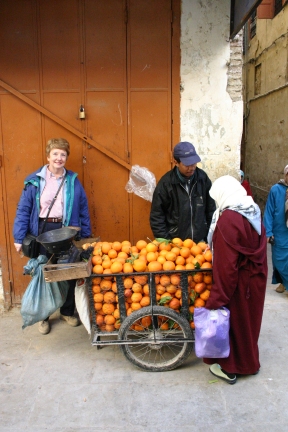
Fresh oranges are for sale everywhere
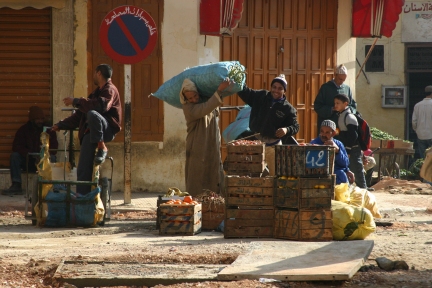
Fresh produce is brought to the street market every day
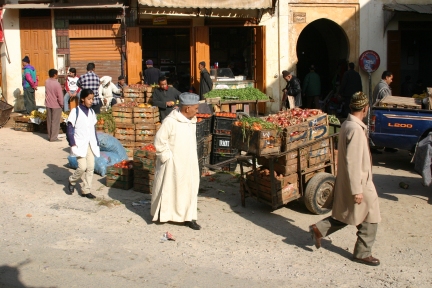
Market scene

Hand crafted pottery and ceramics is a specialty in Fez. It was
interesting to learn that olive pits are used to build the fire for glazing.
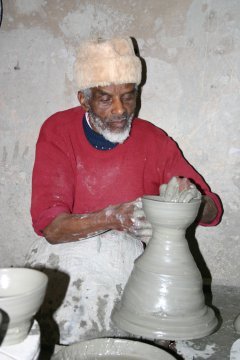
At the pottery factory each piece is molded by hand
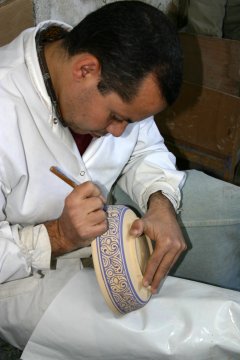
Each piece hand painted by a skilled artisan
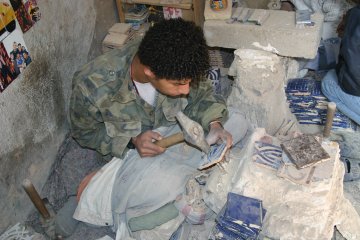
The tile is hand panted, then glazed and then designs on are chipped by hand
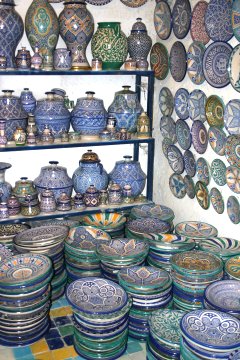
Naturally we are taken to the showroom
where we can buy our favorite design

The souk is the open market. Every city has one and they are
the most wonderful and exotic places to visit. Bargaining for a price is manditory.
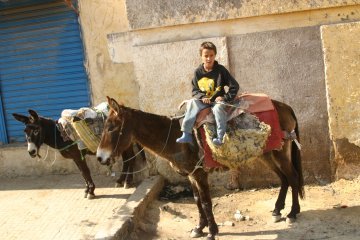
We are taken to the souk - a market where
anything and everything can be purchased
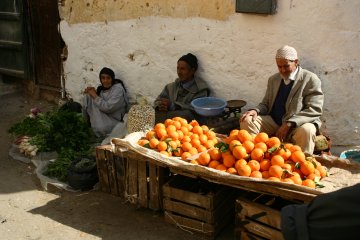
Lovely colorful fresh oranges.
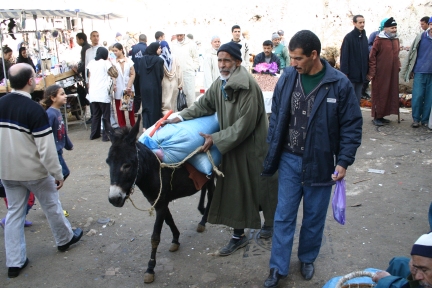
Streets are so narrow that donkeys
are the only way to carry goods in and out

Stairs in the streets are not uncommon

A donkey waits for his load outside the dying factory
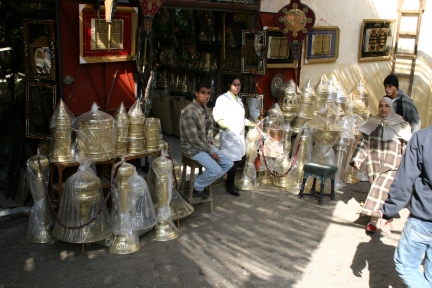
Silver and brass serving pieces used for weddings
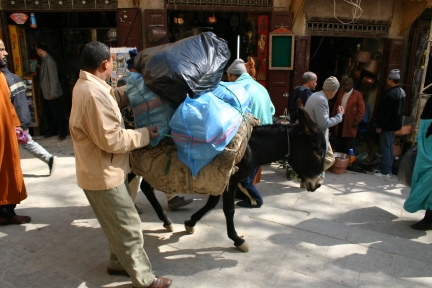
It is so unique to see the donkey used to carry goods
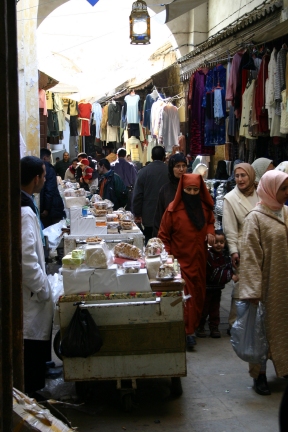
Women all cover their heads in the Islamic tradition,
but you quickly learn that wearing a veil is more
cultral or tribal than it is religious
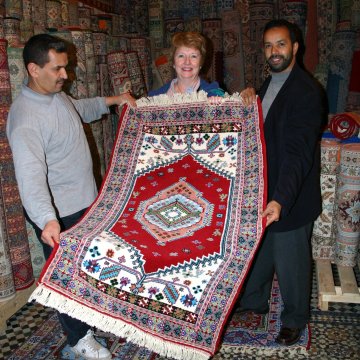
No trip to a Souk would be complete without
a visit to a carpet shop. This beautiful hand woven carpet
now adorns the floor in front of our fireplace
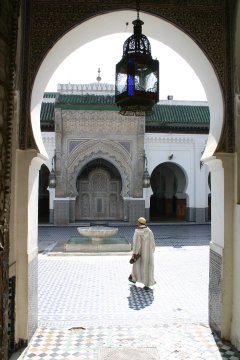
There are 350 mosques in Fes. Only the Mosque of Hassan II
in Casablanca is open to non-Muslims. In Fes we were only able to look through
the gate of the Karaouiyine Mosque established in 859. It is one of
the oldest and most illustrious mosques in the western Muslim world.
It has been one of the main spiritual and intellectual centers of Islam
and remains the seat of the Muslim university of Fes.
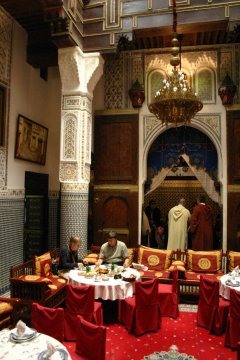
If you travel with Hicham, our tour director,
you eat in the finest places.
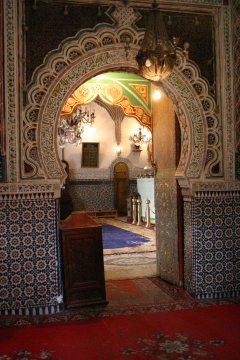
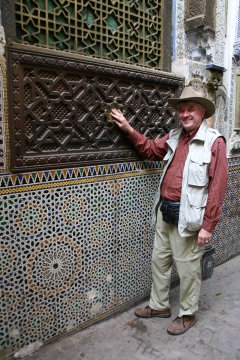
Looking through the doors of another mosque. Although we can't go in we are allowed
to make a wish as we rub the brass window coverings.
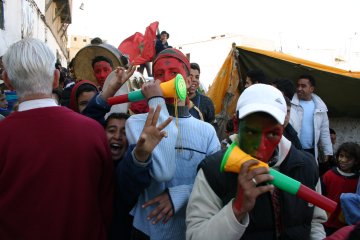
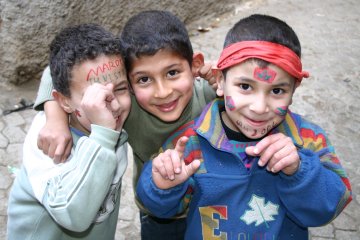
The day we visited Fes Morocco's soccer team was playing in the
finals against Tunisa for the all African championship. Spirits of
fans of all sizes ran high.
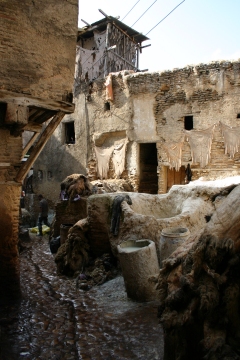
The tannery is a highlight of our visit to
the Souk in Fez. The Souk is not just a place to sell goods, it
is also divided into different manufacturing districts. The most
famous one in Fez is the tannery where sheep skins are clean of wool
tanned, dyed, and dried.
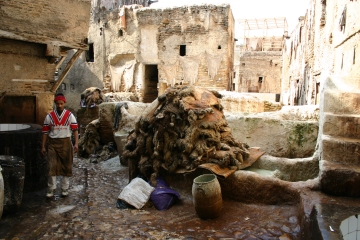
The skins are soaked in lime for a week so
the wool comes off.
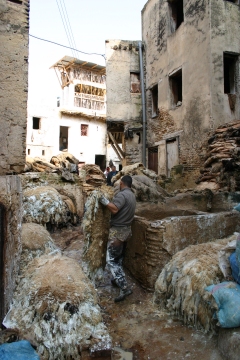
Wet skins are hanging to dry in any free space
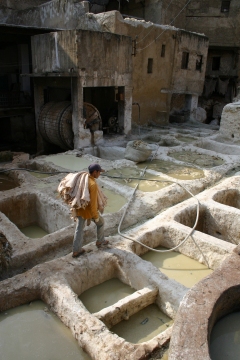
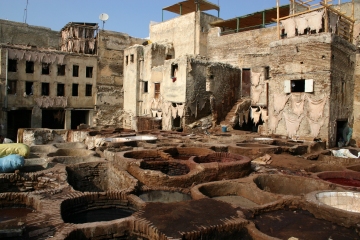
The stone soaking vats are covered with lime
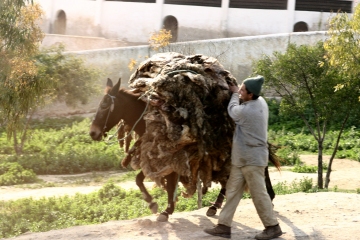
As we left the souk we saw a shepard bringing a load of
skins to the tannery
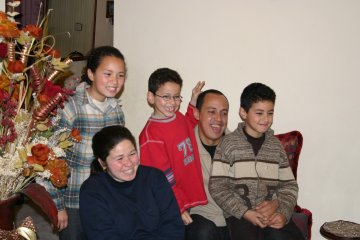
That evening we spent having dinner with a local Moroccan
family of five. This is always a treat on the OAT itinerary. Have have
the opportunity to see their homes and learn about life in Morocco.
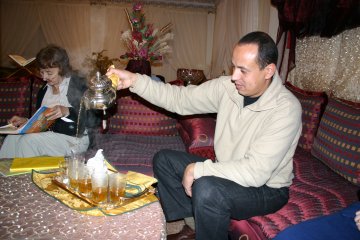
After dinner our host treats us to mint tea.

After we left Fez we headed south toward the Atlas mountains and into the Sahara.
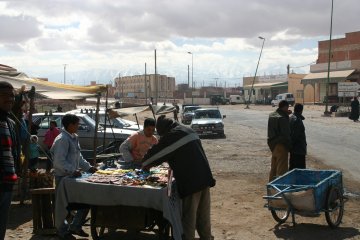
On our way to the Sahara we head toward the Atlas Mountains. In Zeida, a small desert town
we stop to stretch our legs and look at life in this small village.
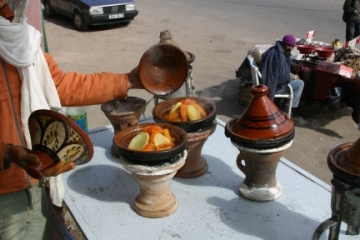
My guide book says in Morocco they have a wonderful dish called a tajine.
It suggests you stop at a restaurant before you go on your hike, order your
favorite dish (beef, lamb, chicken) and when you return there it is all
nice and hot. We found that is not necessary. There are tajines cooking
fresh all the time.
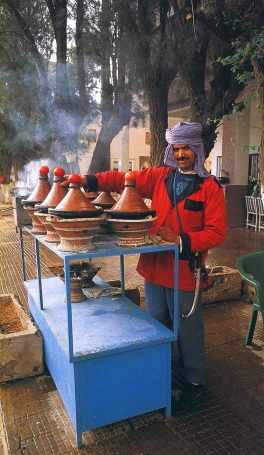
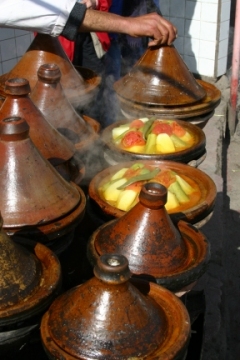
Tagine cooking over hot coals ready for lunch
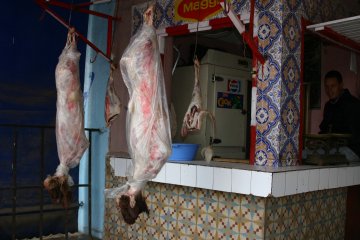
Fresh meet is hung out at the butcher shop. The head of the animal
is left on so you know what kind of shop this is. It appears that
each butcher shop specializes in one kind of meat.
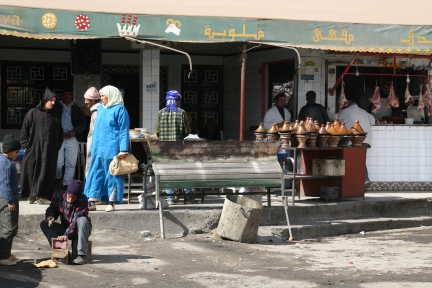
You can buy all your produce for the day in the
open air market.
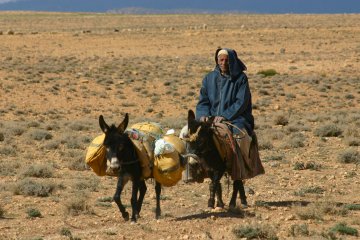
We get our first real feeling for the Sahara as we
pass this man and his donkey laiden with goods.
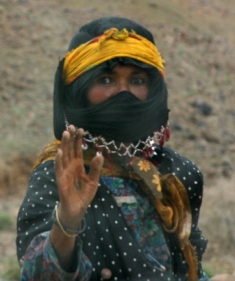
a Bedouin woman waives as we head into the desert
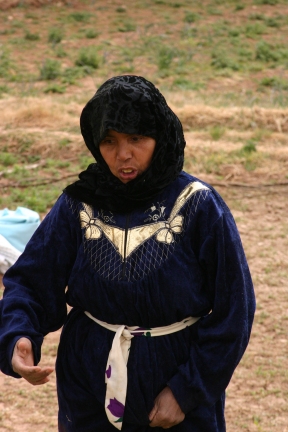
Not all women cover their faces. It appears to depend
more on where they live and tribal custom. Wearing a face covering makes
good sense when sand is blowing all day in the desert

The vision I had of an oasis was a pool of water surrounded
by palm trees in the middle of the desert. We were to learn differently.
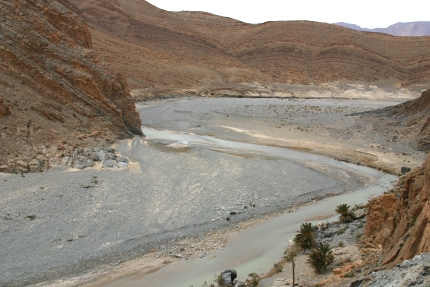
Snow melting from the High Atlas Mountains form rivers.
Here we are at the Gorges du Ziz (gorge caused by the river Ziz). Ziz means Gazelle
through the desert which bring life giving water
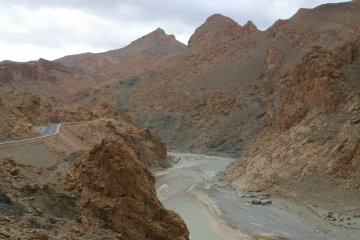
The River Ziz flows west into the Sahara and eventually
flows below the sands and out of existance.
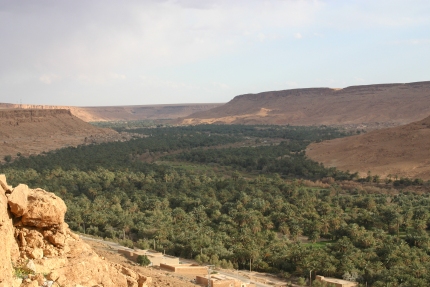
An "oasis" may be anything from wter well, or
a small pool of water surrounded by date palm trees, or it may be several
miles of a river valley in which date palms and small gardens may thrive.
Villages spring up in the desert at the furthest edge of the area
which can support crops which depend upon irrigation.
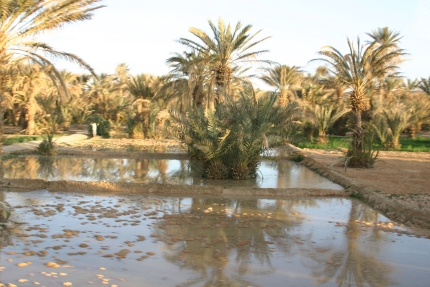
Small plots of irrigated fields are found everywhere along the
shores of the river. Water is carefully aloted to each farmer.
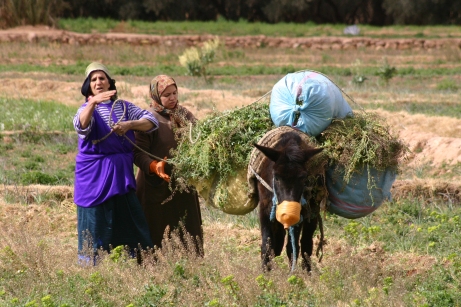
Clover is cut by hand and then carried by
donkey to the farm to feed the animals
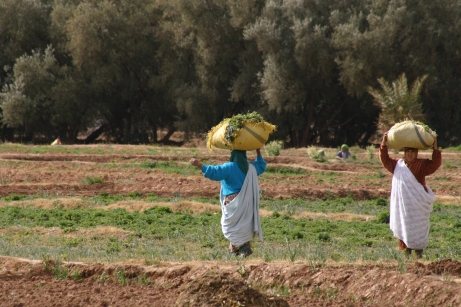
It is not uncommon for the crop to be carried by hand
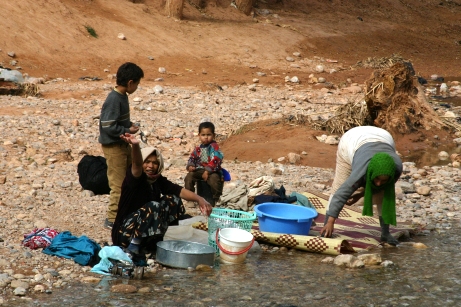
The river also serves as a laundromat

After a hard day of driving we arrived at Erfoud, the last
large city before we headed overland into the Sahara.
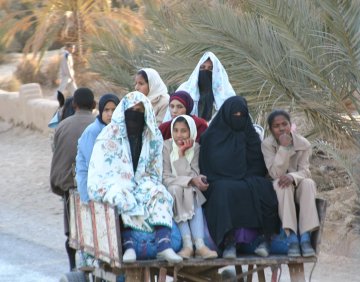
Here is a Berber Mercades.
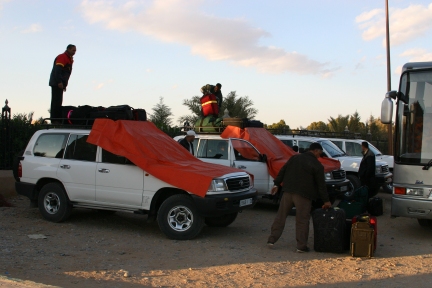
As the sun goes down we exchange our bus
for a 4x4 jeep before traveling into the Sahara




Come back again, this page is still under construction.
Links to other Moroccan Adventures:
If you have any questions, or comments, I would be interested in hearing from you. Just
 let me know.
let me know.

This page was created by Bob "Belli" Frazee
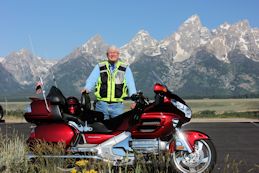
Belli at the Grand Titons, June 2015
Since September 4, 2005, you are visitor number






















































